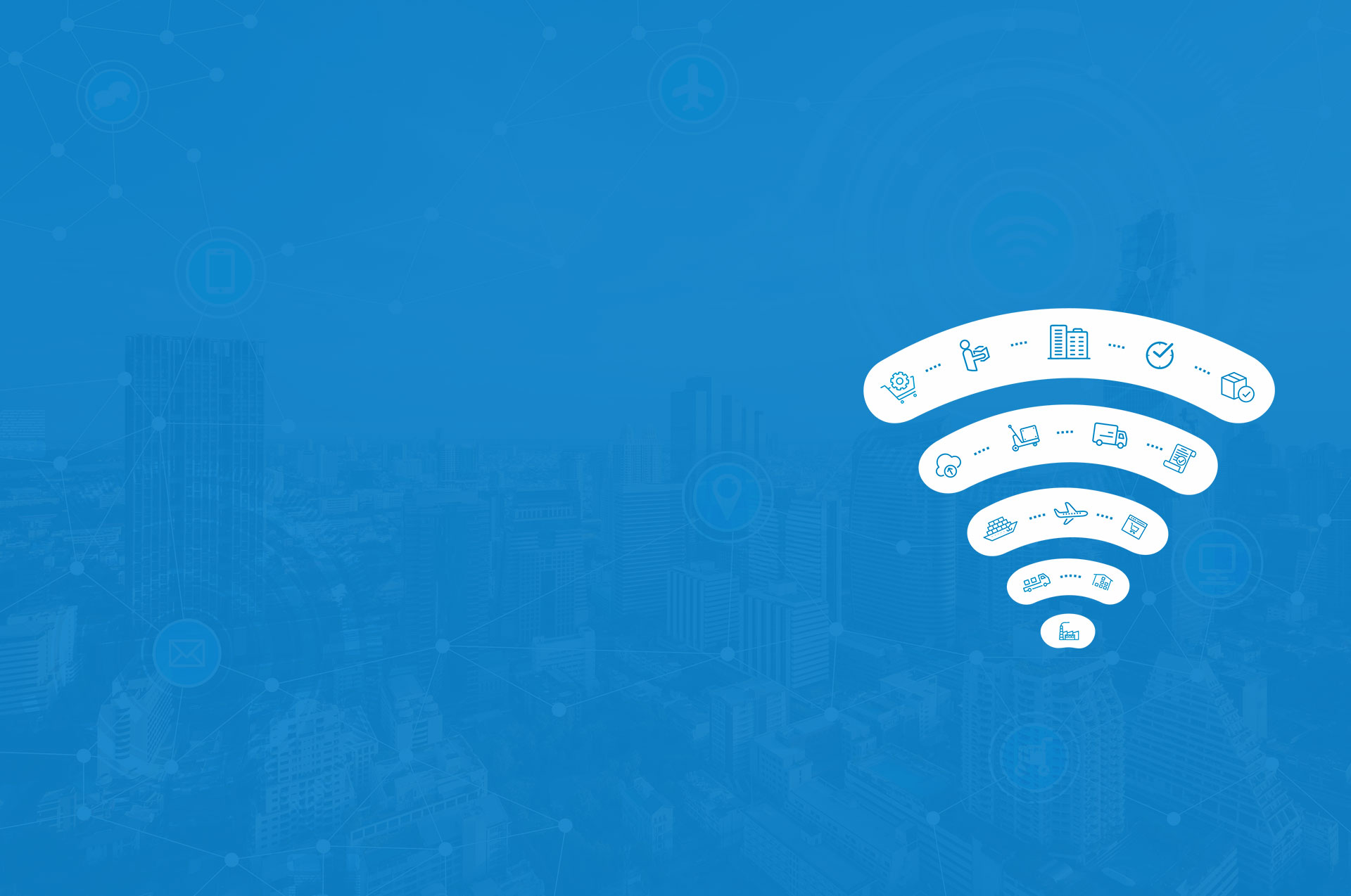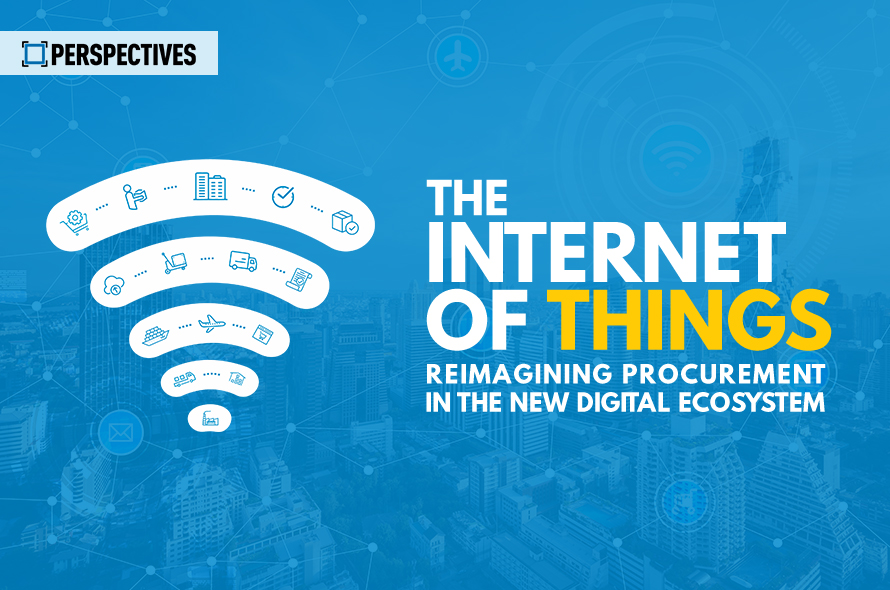The massive technological advance known as the Internet of Things (IoT) is permanently changing the relationship between people and machines and creating new opportunities for businesses. Through smart devices, inanimate objects are making split-second decisions, eliciting quick responses, and driving automated solutions in an increasingly complex network.
But what exactly is IoT? How does it work? How is it going to impact various industry sectors? And what are the anticipated benefits for procurement and supply chain?
GEP’s Knowledge Bank debuts its new “Perspectives” series with The Internet of Things: Reimagining Procurement in the New Digital Ecosystem. This concise, engaging guide lays it all out for time-pressed procurement pros: how IoT works, how its impact is being felt in various commercial enterprises, and – perhaps most importantly – what you need to do now to unlock IoT’s imminent potential.
Download your complimentary copy and get the information you need right now about IoT.
Introduction
In the earlier days of the internet, people used to say they were “going online.” Today, people are outnumbered by billions of objects and devices that are connected to the web. This phenomenon has become known as the Internet of Things (IoT), in which embedded computers enable everyday objects to interact with their environments and generate unprecedented amounts of data that helps us to control and organize the world around us.
Today, the internet is the world’s main channel for growth and innovation. The massive technological overhaul that is IoT will permanently change the relationship between people and machines, and create a slew of opportunities for businesses that recognize the internet’s burgeoning ability to influence the physical world. Through smart devices, inanimate objects will make spot decisions, elicit quick responses and derive automated solutions in an increasingly complex network.
Gartner analysts have stated that they expect over 50 percent of new business processes and systems to incorporate some element of IoT by the year 2020. IoT has the potential to redefine key value chain operations, and with respect to procurement and supply chain, could result in those business functions becoming more decentralized, streamlined and efficient.
A Supply Chain that Thinks for Itself
With companies worldwide digitizing essential functions internally and along their supply chains, the impact of IoT is already being felt. From product tracking to order processing, from inventory management to warehousing, the supply chain is embracing an IoT-led disruption through machines, factories and infrastructure.
It’s early yet in the IoT journey, but many manufacturing companies have already started to make inroads, investing in digital technologies like sensors or connectivity devices, and in software and applications like linked automation systems which could execute shop floor processes as soon as orders are received. In extrapolation, every supply chain process from material management, storage, delivery, invoicing and payment could also follow suit, forming one fully integrated, independent system which will operate autonomously via the IoT.
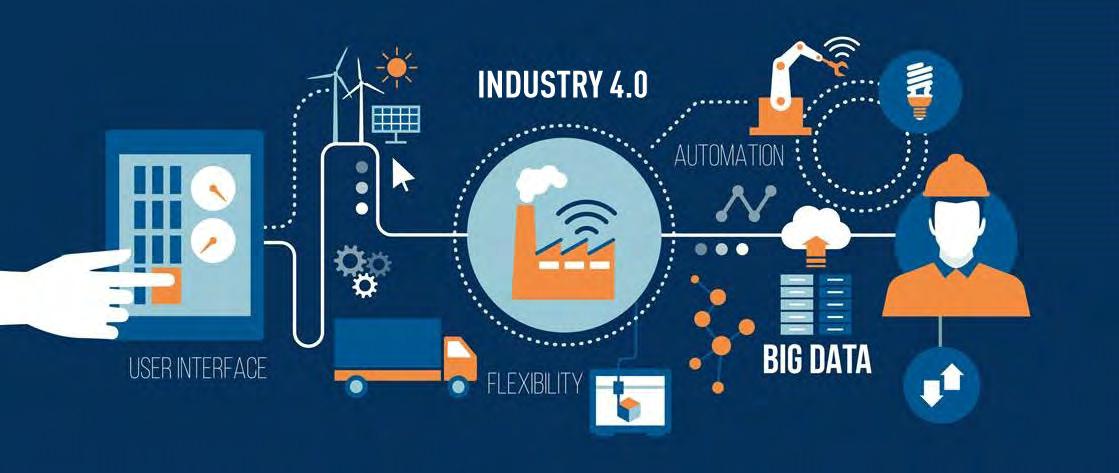
How It Works
Physical objects – buildings, cars, thermostats, coffee makers, alarm systems, electrical systems, streets and sidewalks – are embedded with electronics, software, sensors, actuators, and network connectivity with smart devices, enabling these tangible objects to send and receive data.
The IoT assimilates the physical world into programmable computing systems, enabling everyday objects to be sensed, monitored and administered remotely within an existing network infrastructure. This improves efficiency, accuracy and cost savings, while reducing human overhead costs.
Embracing Industry 4.0
The latest trends in automation and data exchange in manufacturing technology have been collectively dubbed “Industry 4.0.” A key product of Industry 4.0 is the “smart factory” – highly advanced, modular workshops where mechanisms known as cyber-physical systems supervise real-world activities by means of computer-based algorithms linked to the internet.
Using IoT, these cyber-physical systems virtually map every element of the physical surroundings they control. Over this augmented nexus, they interact with one another and with humans alike, making informed, decentralized decisions pertaining to the value chain and its participants.
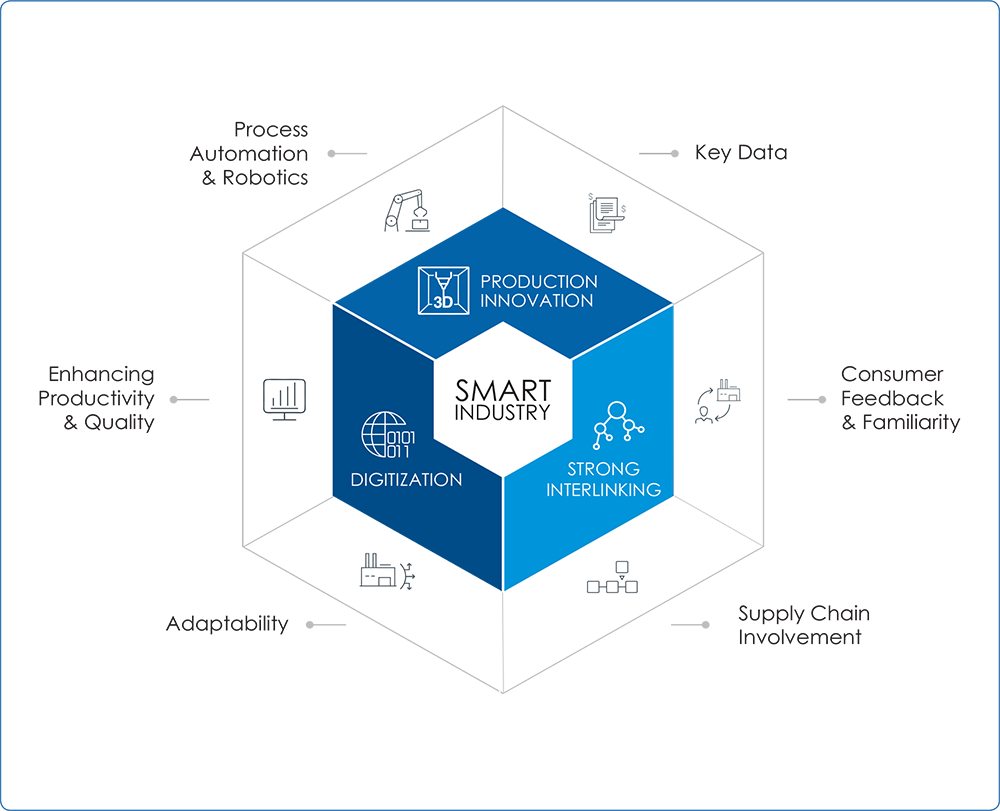
Using IoT: A Sampling of Sectors
IoT will have an ever-expanding pool of applications for commercial enterprises as it continues to address a variety of industry-specific challenges.
- For retail, IoT shows promise for boosting supply chain efficiencies, developing new business avenues, and redefining the consumer experience.
- In the construction space, IoT is already helping lower energy costs, improve sustainability, and ensure compliance standards are met by supplying data from multiple systems.
- Power management will become more efficient as grids and associated devices communicate with each other to disseminate energy in more systematic and productive ways.
- IoT can enable manufacturing plants to attain higher levels of operational and productive efficiency, virtually eliminate human error and improve safety standards for workers.
IoT-Driven Business Opportunities
The IoT “revolution” will stem from the automated decisions made by interoperable devices receiving and acting on data derived from real-time interactions with the physical world. Here are three examples of significant business opportunities that could result from this disruptive technology:
- Greater visibility into products, services, processes, vendors, clients and partners
- Increased interfacing between humans and machines resulting in higher productivity, improved accuracy, lower costs and fulfilling work experiences
- Better operational efficiency, such as longer uptimes, and better asset utilization, brought about by predictive analysis, forecasting, preemptive maintenance and remote surveillance
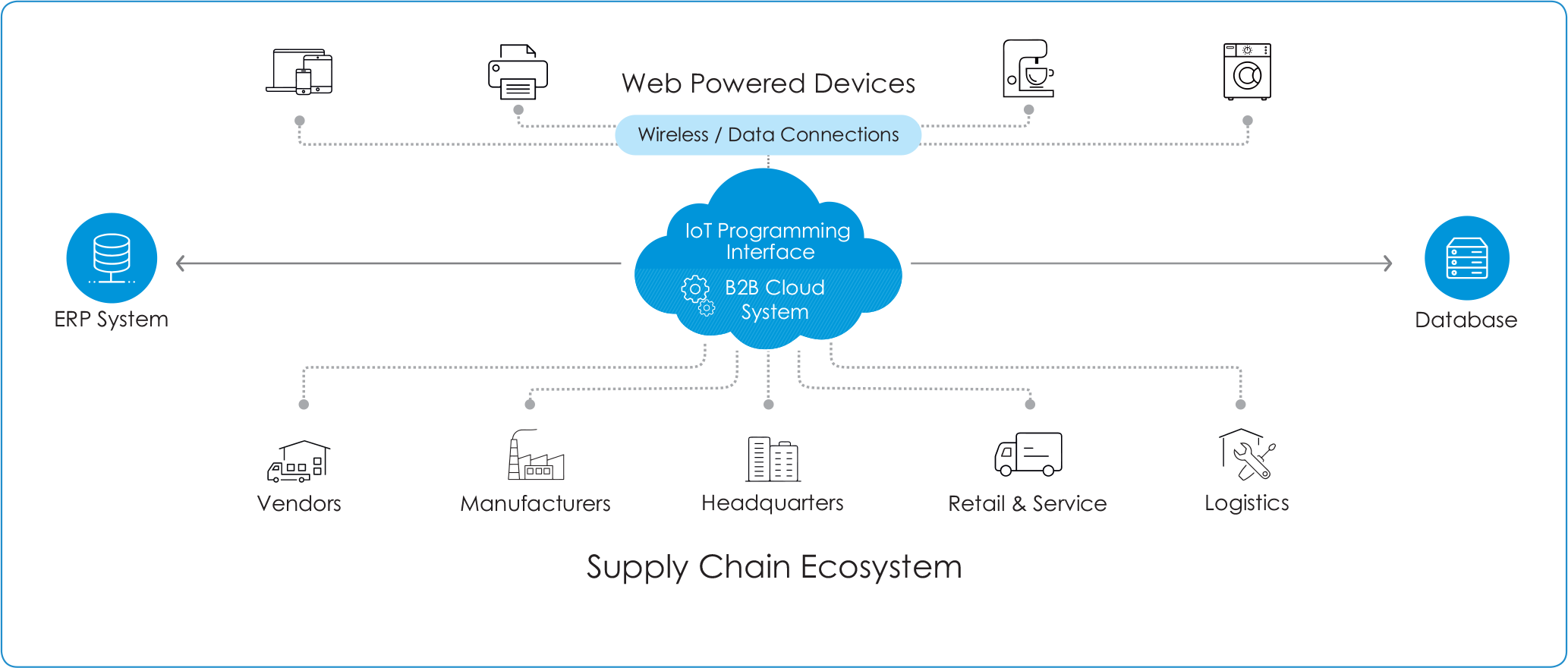
Focus: Procurement & Supply Chain
IoT technology will generate significant quantities of data which can help procurement pros react much more quickly and effectively to both opportunities and threats. Anticipated benefits include:
- Improved visibility into spend patterns, aiding analysis of supplier material usage in order to update catalogs
- Transparency into employee purchase behavior to identify precise usage and requirements of organizational resources
- Faster creation of contracts and timely expiration notifications to suppliers
- Identification of new, desirable suppliers with automated post-approval invitations, and alerts on supplier performance, noncompliance and contract defaults
- Real-time insight into logistics and the status of materials in transit
- Surveillance of inventory for maintaining optimal stock levels, better cash flow management and elimination of human error
- Lower service and repair costs stemming from quicker receipt of diagnostic information by maintenance teams, thereby reducing occurrences of machine failure
- Automation of menial tasks and the ability to make predictive decisions in purchasing
Together and singly, these advancements can aid the transition from transactional to strategic, value-creating business processes that help monitor spend categories and allow procurement to function more efficiently across the procure-to-pay (P2P) process.
The Next Big Step: What Enterprises Must Do
To unlock the imminent potential of IoT, organizations need to get the right systems, processes, personnel and technology firmly in place. Visibility into the huge masses of data that IoT continuously churns out will be the priority, with subsequent analysis to ensure seamless functioning of the supply chain.
Leading companies, recognizing the competitive advantage that comes with being ahead of the curve, have already begun exploring the potential applications of IoT. Whether by harnessing the know-how of their own internal technology advisors, or by tapping the cutting-edge expertise and innovative thinking of external consultants, enterprises in every sector are building strategic roadmaps to realize every advantage offered by the evolving business landscape.
While there is general agreement that IoT is shaping up as a transformative technology, enterprises still need to get back to basics when considering its practical applications. The key questions are simple: What kind of information do we want to get from connected devices? And what can we do with that information? The answers to those questions will guide the decisions and actions that directly impact a company’s financial health and operational excellence.
